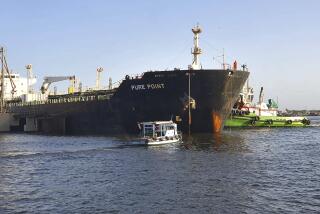Optimists see an opening for better India-Pakistan ties
ATTARI, India — Real estate prices have jumped sharply in recent months in this area where India meets Pakistan, as resorts and roadside restaurants sprout up, eating into the lush wheat fields of northern Punjab state.
Driving the increase is a bet that relations between the longtime adversaries will continue to improve as memories of the 2008 Mumbai attacks, blamed on Pakistani insurgents, fade and long-suppressed trade between the nuclear-armed neighbors grows.
In the wake of a July 2011 agreement to resume peace talks, the two sides last month pledged to ease visa requirements for businesspeople, pilgrims, tourist groups and senior citizens. Pakistan has said it will also allow companies to trade about 6,000 products with India — up from 137— matching India’s rules. India unilaterally announced in August that it would allow Pakistani firms to invest in any industry but defense, space and nuclear energy.
Politicians in both countries herald the prospect of closer ties as “a new era,” a “win-win” and a way to alleviate regional poverty and unemployment. The hope is that greater trust will eventually help solve more intractable disputes over water usage, the divided Kashmir region, a deadly military standoff on the Siachen Glacier and Pakistan’s alleged support of terrorism.
“If there has to be a war, let it be a war of economic competence and excellence,” Muhammad Shahbaz Sharif, chief minister of Pakistan’s Punjab province, said recently.
So far, the new Indian businesses lining the 18-mile road between the Attari border crossing and nearby Amritsar aren’t exactly rolling in rupees.
On a recent holiday weekend, Rainbow Resorts’ water slide and paint ball center were deserted. An elderly farmer dozed a few hundred feet away and a water buffalo with two crows on its back had retreated to the shade.
On the Pakistani side, a line of parked trucks more than a mile long snaked toward India’s new 118-acre cargo and passenger gateway, the drivers playing cards and making minor repairs to their vehicles as they whiled away the many hours it takes to get through the crossing.
The well-organized Attari Integrated Check Post, the first of 13 planned along India’s 9,300-mile land border, belies India’s reputation for poor infrastructure. More than 10 times larger than its predecessor, the terminal boasts metal detectors, currency exchange counters, a prayer room, banks, cafeterias and about 230 security cameras.
But ratcheting open the gates between the nations hasn’t been seamless. The visa deal was reportedly delayed four months while the two sides quibbled over where the signing would occur. (It finally took place in Islamabad, the Pakistani capital.)
And implementation has been painfully slow. With fewer than 200 people, on average, crossing the border each day, the terminal’s flat-screen computers mostly sit idle as bored immigration officials read newspapers behind their shiny desks.
India’s terminal opened in April, 10 months behind schedule, but more quickly than Pakistan’s renovated Land Freight Unit, which remains unfinished.
“We’ve no idea when it will be done,” said Amanjeet Singh, the Integrated Check Post’s assistant commissioner of customs, as he signed documents and slid them to the floor for an aide to recover, a practice seen among some senior bureaucrats. “They are tight-lipped about the entire situation.”
Under the nose of wary border guards, each country handles imports on its side of the divide as they are delivered by the other nation’s trucks. Once unloaded, usually within a few hours, the trucks immediately turn around, ensuring that they never remain overnight.
So far, Pakistan is importing mostly vegetables, livestock and newsprint, while India is importing dried fruit, cement and gypsum. If relations continue to improve — a big if for neighbors that have gone to war three times since 1947 — trade could double within three years, experts say, up from the current $2.7 billion annually and about $300 million in 2004.
Traders are hopeful.
“In the past, the two countries would move 10 steps forward and 100 steps back,” said Amjad Riaz, 58, an exporter and former president of the Karachi Chamber of Commerce and Industry in Pakistan, who says land prices are also rising on his side of the border as more terminals, restaurants and truck stops are built. “Now it’s like we’ve moved 20 steps ahead.”
India hopes Attari will also serve as a land gateway for trade with Central Asia and the Middle East. In March, Islamabad for the first time allowed Indian wheat to cross its territory to reach Afghanistan.
Pakistani drivers unloading their goods in India aren’t allowed to move beyond the terminal’s confines, must cross back within 12 hours and are required to wear fluorescent green vests to distinguish them from Indian drivers (in yellow).
Pakistan’s elaborately painted trucks are searched before being unloaded, including an inspection of undercarriages, for weapons, drugs and other contraband. Their movements are monitored by India’s Border Security Force on 19 screens in a nearby building. A similar routine occurs in Pakistan.
In May, the two nations beefed up border security after Pakistan’s banned Lashkar-e-Taiba insurgent group, which opposes closer ties with India, threatened to destroy the new terminal. India and the United States blame the group for planning the Mumbai attacks, which killed 166 people.
Charandas Bindal, an Indian businessman in Ludhiana who imports cement from Pakistan, welcomes the opportunity. Though Pakistan’s economy is decades behind India’s, he said, increased trade should help it develop.
“Now their troubled companies can see some daylight,” he said. “I have dealt with many Pakistani companies without payment, delivery or quality problems. In fact, their cement is better than India’s.”
Choudhry Tahir, a customs clearance agent in Lahore, Pakistan, said cross-border business through mid-October exceeded that of 2011. “The only thing that could derail this is the politicians,” he said. “And I believe they can’t stop this movement.”
Not everyone is optimistic, however. Amit Grover, 36, partner in his family’s Amritsar-based vegetable exporting business, doubts that business will take off. “This is media hype,” he said.
Delays, bureaucracy and paperwork are major problems, he said, as is the danger of more smuggling. On the first Saturday in October, he shipped 21 truckloads of vegetables to Pakistan. But congestion delayed the crossing until Sunday, he said, and the produce wasn’t unloaded until Monday and Tuesday, after much of it had rotted.
“We suffered a big loss,” he said.
Continued visa delays also make it difficult to build trust through face-to-face meetings, traders on both sides said.
Despite the hiccups, small steps are better than no steps, some said.
“If more trade takes place, they’ll both benefit,” said Subhash Batra, the terminal’s customs superintendent. “Both countries can’t afford war and people are fed up. But the history is always falling back. With politicians, all you need is one person who’s aggressive.”
Tanvi Sharma of The Times’ New Delhi bureau contributed to this report.
More to Read
Sign up for Essential California
The most important California stories and recommendations in your inbox every morning.
You may occasionally receive promotional content from the Los Angeles Times.









